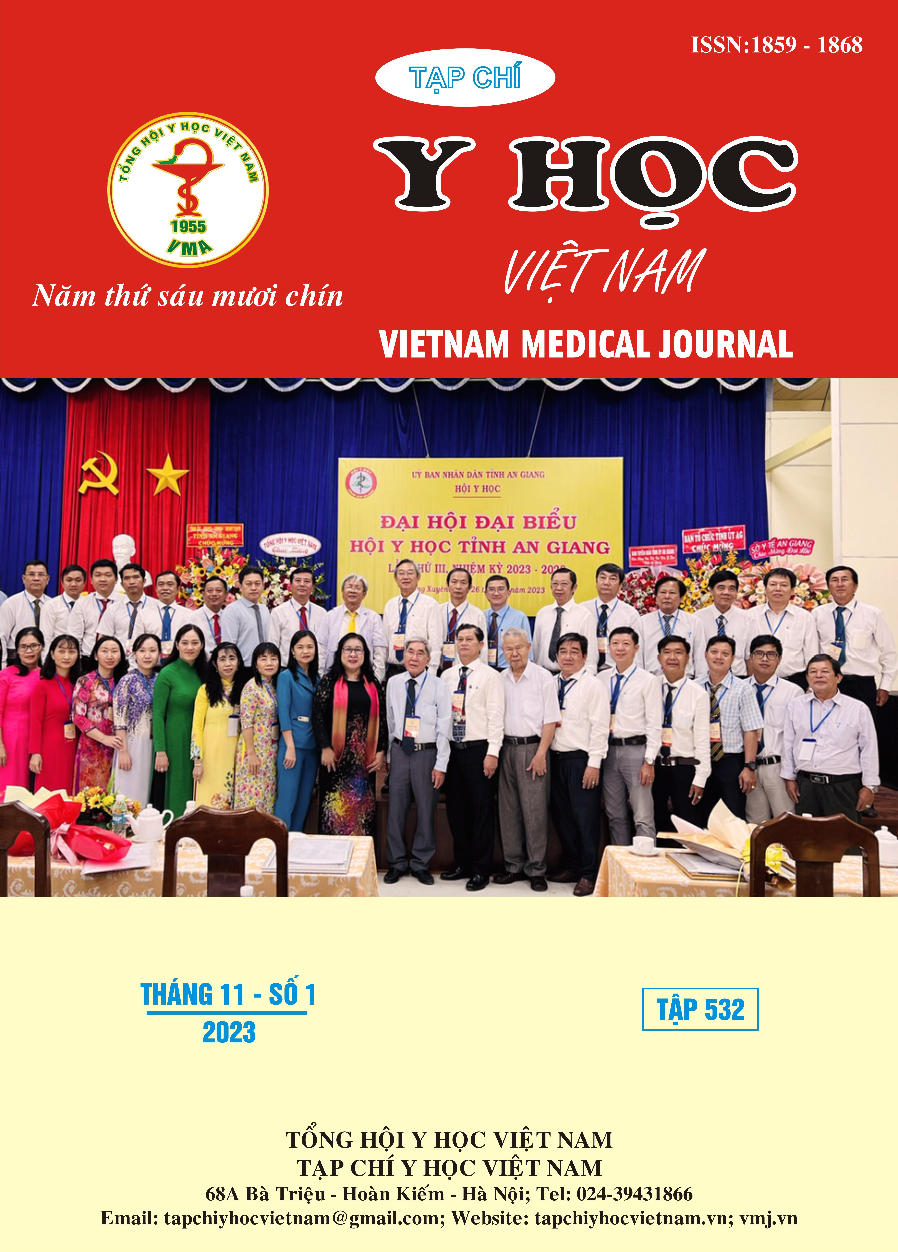INFECTIONS COMPLICATIONS OF BURNS CHILDREN’S AT CHILDREN'S HOSPITAL 1
Main Article Content
Abstract
Objectives: Survey on infectious complications of burns in children at Children's Hospital 1.Materials and methods: 383 burned children were treated at the Burns - Plastic Surgery Department of Children's Hospital 1 from February 1, 2021 to August 15, 2022. Research method is descriptive prospective, longitudinal follow-up.Results: There were 383 admissions to Children's Hospital 1 with a complication rate of 21,9% infection. In there, 8,6% burn infection, 6,8% sepsis, 2,3% pneumonia, 1,6% gastrointestinal infection, 0,8% septic shock, 0,5% cellulitis, 0,5% catheter infection, 0,5% central nervous system infections. In 8,6% of burn wound infections, 100% were positive microbiological results, of which Acinetobacter spp 21,2%, Staphylococus spp 18,2%, Pseudomonas aeruginosa 0,1%. In 6,8% of sepsis, the percentage of positive blood cultures was 38,5% and 60% of sepsis agents with positive blood cultures were Staphylococus coagulase negative. In which, 1 study subject had a blood culture with Candida albicans. Complications of burns in children increase as the burned area and deepth increases. Conclusions: Burn infection is a complication that occurs more frequently than other infectious complications in children, and infectious complications in pediatric burns increase as the area of the burn increases and the depth of the burn increases. The causative agents of infection are Acinetobacter spp, Staphylococus spp, Streptococus spp, Enterococcus spp, Enterobacter cloacea, Escherichia coli, Candida albicans.
Article Details
Keywords
burned children, infectious complications of burns in children.
References
2. van Duin D, Strassle PD, DiBiase LM, et al. Timeline of health care–associated infections and pathogens after burn injuries. American journal of infection control. 2016;44(12):pp. 1511-1516.
3. Guillory AN, Porter C, Suman OE, Zapata-Sirvent RL, Finnerty CC, Herndon DN. Modulation of the hypermetabolic response after burn injury. Total burn care. Elsevier Health Sciences; 2018:pp. 301-306. vol. 2.
4. Devrim İ, Kara A, Düzgöl M, et al. Burn-associated bloodstream infections in pediatric burn patients: time distribution of etiologic agents. Burns. 2017;43(1):pp. 144-148.
5. Güldoğan CE, Kendirci M, Tikici D, Gündoğdu E, Yastı AÇ. Clinical infection in burn patients and its consequences. Original Article. 2017;23(6):pp. 466-471.
6. Gülhan B, Kanık Yüksek S, Hayran M, et al. Infections in pediatric burn patients: An analysis of one hundred eighty-one patients. Surgical infections. 2020;21(4):pp. 357-362.


